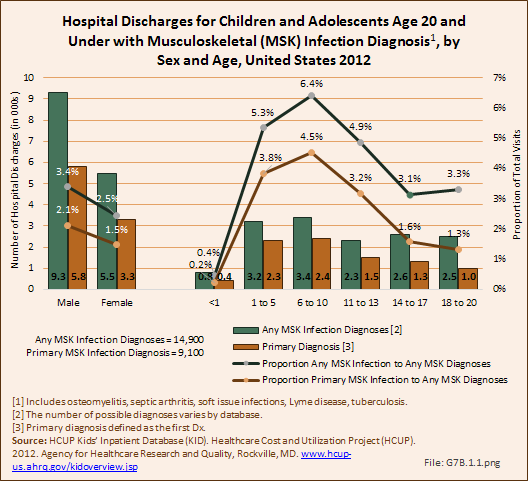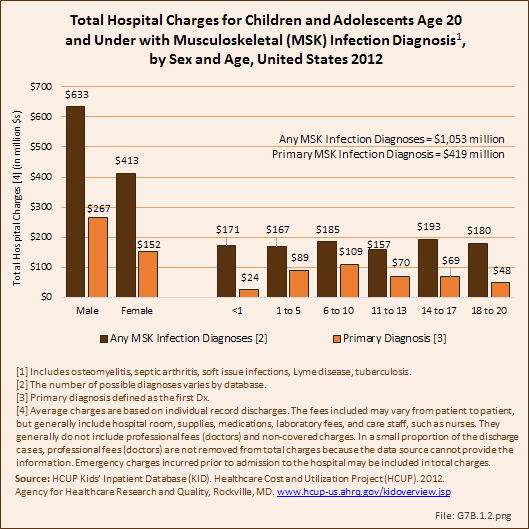

Musculoskeletal infections were diagnosed in 119,900 children and adolescent health care visits in 2012, of which 78,800 had a primary diagnosis of musculoskeletal infection. Of this total, 14,900 children and adolescents were hospital discharges, with 9,100 hospitalizations for a primary diagnosis of a musculoskeletal infection. (Reference Table 7.1.1 PDF [1] CSV [2] and Table 7.1.2 PDF [3] CSV [4])
Males were more likely to be hospitalized with a musculoskeletal infection than females, as were children between the ages of 1 and 10 years. Musculoskeletal infections as a primary diagnosis accounted for 1.8% of hospital discharges for any musculoskeletal-related condition, but only 0.1% of hospital discharges for all health care reasons for children and adolescents age 20 years and younger. (Reference Table 7.2 PDF [5] CSV [6])

Total charges averaged $70,700 for a mean 8.5-day stay when children and adolescents were hospitalized with a diagnosis of musculoskeletal infection along with other medical conditions. With a primary diagnosis of infection, the stay was shorter (6.3 days), and mean charges were $46,000. Total hospital charges for all primary musculoskeletal infection discharges in 2012 were $419 million. (Reference Table 7.2 PDF [5] CSV [6])

Links:
[1] https://bmus.latticegroup.com/docs/T7.1.1.pdf
[2] https://bmus.latticegroup.com/docs/T7.1.1.csv
[3] https://bmus.latticegroup.com/docs/T7.1.2.pdf
[4] https://bmus.latticegroup.com/docs/T7.1.2.csv
[5] https://bmus.latticegroup.com/docs/T7.2.pdf
[6] https://bmus.latticegroup.com/docs/T7.2.csv